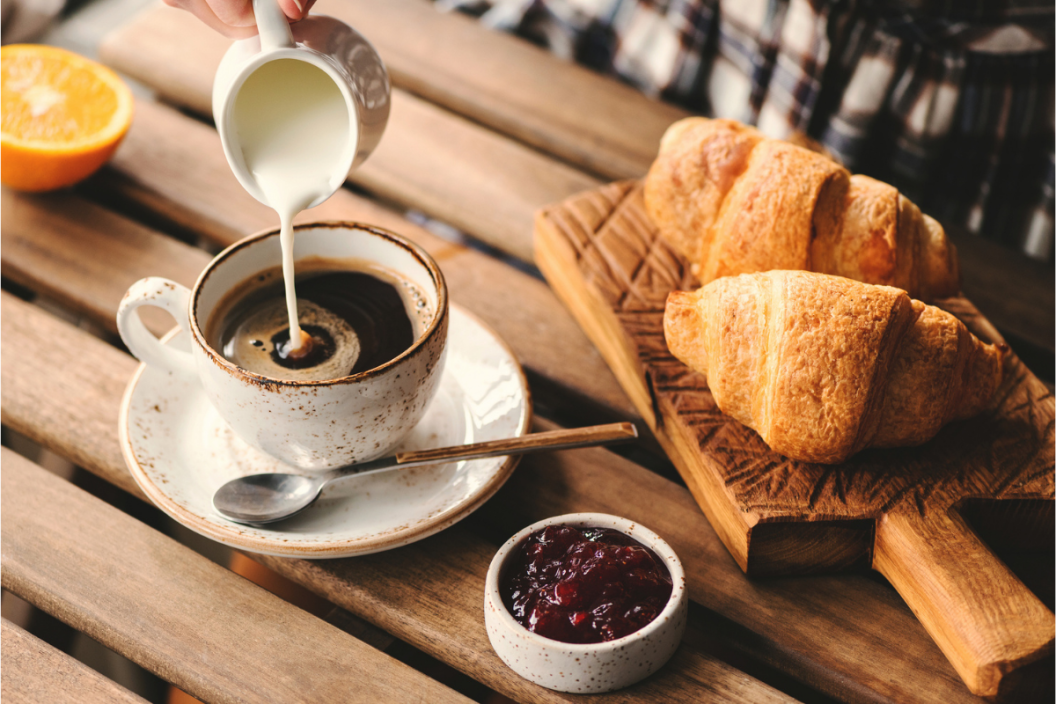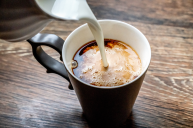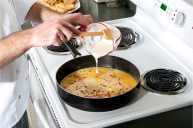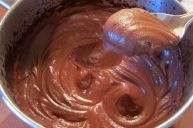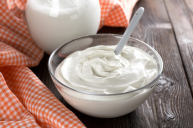A trip to the grocery store dairy aisle, with its myriad shapes, sizes and colors of cream-containing cardboard cartons, can be overwhelming. Cream is an essential ingredient of many recipes, adding depth and thickness to sauces and soups and whipping into tasty frostings for desserts. However, since each type of cream has different components and uses, choosing the correct cream can make or break your recipe. To avoid this, it's best to know which cream is used for what, from table cream to half-and-half.
Videos by Wide Open Country
Whether you're whipping up a party dip or treating yourself to a luxurious coffee drink, there's a type of cream for everything. One of the most useful ingredients in your kitchen is table cream, but even the biggest advocates of cream in cooking are sometimes unsure about how to use it. Here's our guide to all of the creams you'll find in the dairy aisle and how to use each in your cooking.
What Sets Each Cream Apart?
Cream is the yellow-white fatty component of non-homogenized milk, which rises to the top and is skimmed off before homogenization. This dairy product is used in many dishes, from savory soups and curries to toppings on ice cream sundaes. However, you can't use just any cream for your recipe. Simply put, the difference between types of cream is their fat content. For example, half-and-half contains about 12 percent butterfat, while heavy cream has about 38 percent fat.
The higher the fat content, the thicker and richer the cream, making it easier to whip into firm, holding "peaks" for whipped cream. Higher-fat cream also withstands curdling better. Because of this, higher fat content cream is the way to go for soups and sauces, which require cream to be heated.
Table Cream is a Staple of the Kitchen
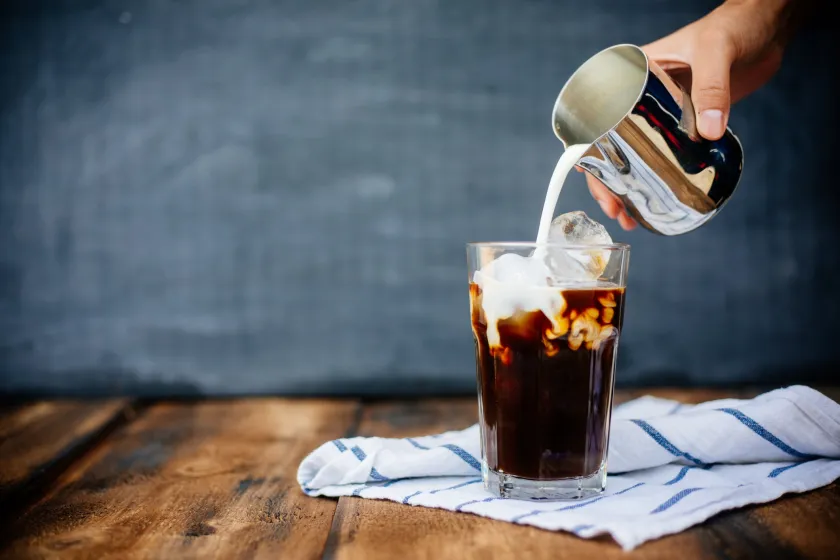
Getty Images/agrobacter
Returning to the question of what table cream is, this versatile cream is aptly named, as it's the perfect ingredient to have on your table for any number of meals. Also called light cream, single cream or coffee cream, table cream contains anywhere from 18 to 30 percent milkfat, making it more high fat than half-and-half but less so than the creams used for whipping.
Table cream is the perfect addition to coffee or other drinks that could use a little sweet creaminess. It's also tasty when served over fruits and berries or poured over cakes, crisps and crumbles. You can even pour it over your breakfast oats or in your cereal in place of milk for extra sweetness.
However, table cream isn't a great option for cooking and baking. It doesn't have a high enough fat content to be whipped, and it breaks apart when heated. Table cream will add a rich texture to any sauce or soup, but it's best to add it after the recipe has been cooked or to serve the dish with table cream as a side. Unfortunately, this type of cream is also hard to find in stores, but you can buy it online on Amazon.
Half-and-half
Half-and-half is exactly what its name suggests: equal parts whole milk and cream. It has an average fat content of 12 percent, although that can vary between 10 percent and 18 percent.
Half-and-half is most commonly used as a creamer for coffee or tea, and it's also tasty on top of cereal. Its lower fat content means that it cannot be whipped, so this type of cream is best relegated to your coffee mug rather than being used in baking. Half-and-half is also great for sauces and soups, adding a creaminess to the texture that you won't achieve with water.
Sour Cream
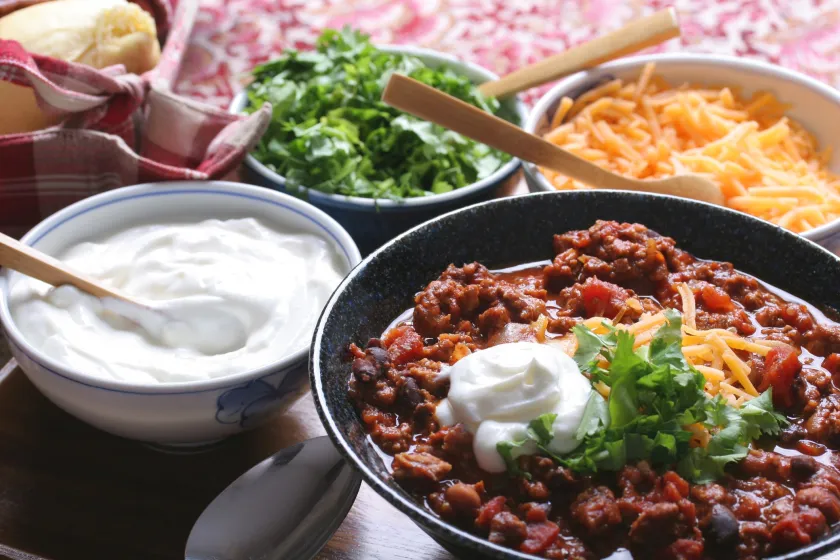
Getty Images/WendyTDavis
Sour cream has a fat content of around 20%, making it more high-fat than half-and-half. This type of cream has a sour, tart flavor that comes from the fermentation process.
This tartness makes sour cream a tasty topping for savory dishes like soup, potatoes and nachos. It also goes well on sandwiches or in salad dressings. However, sour cream isn't the best choice for sweet recipes because of its tart taste.
Whipping cream
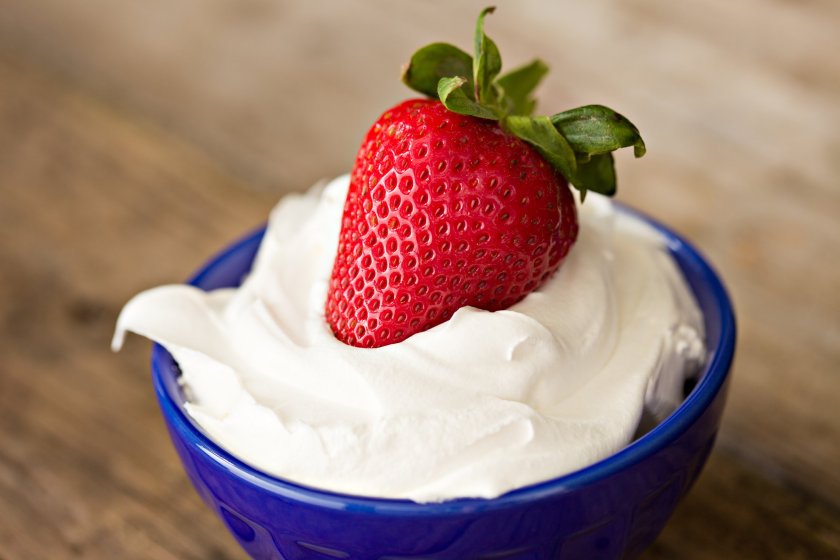
Getty Images/DebbiSmirnoff
With an average of 35 percent fat , whipping cream contains enough fat to be... well, whipped. This type of cream works well as a whipped topping for desserts like pies and cakes. It's also perfect for soups and stews since its fat content makes it much less likely to curdle when heated.
Remember: Despite the name, whipping cream isn't actually the best option for making whipped cream. That designation belongs to heavy cream.
Heavy cream
As far as cream goes, here's the cream of the crop. Heavy cream clocks in at a rich 38 percent milk fat ,though it can reach above 40 percent, so it's pretty close to whipping cream and can be used as such - whipped into a yummy topping or churned into ice cream. Its high fat content means it whips up well - doubling in volume - and holds its shape even better than whipped cream.
Heavy cream is also perfect as an addition to sauces or soups, adding thickness to the texture. However, keep in mind its high fat content if you're cutting down on high-fat foods.
